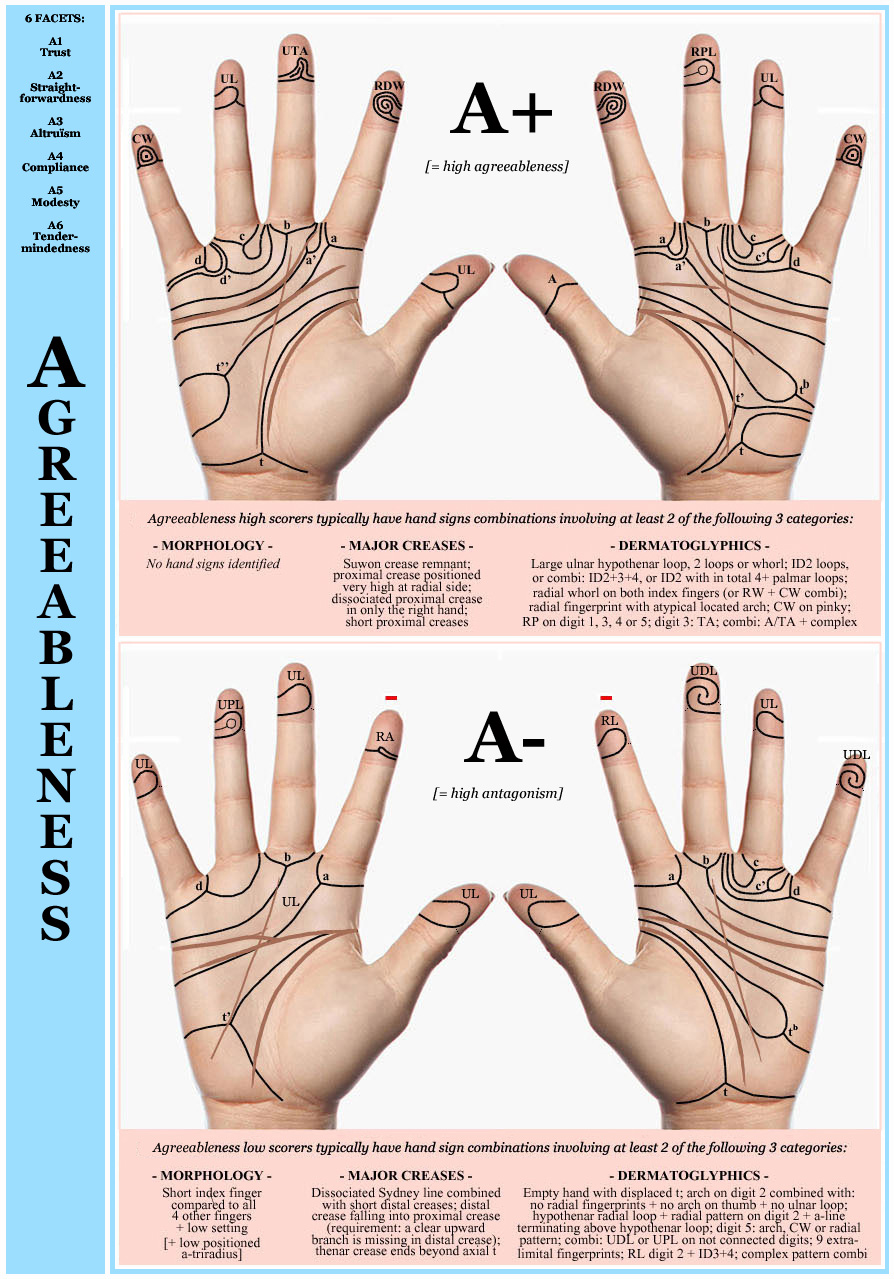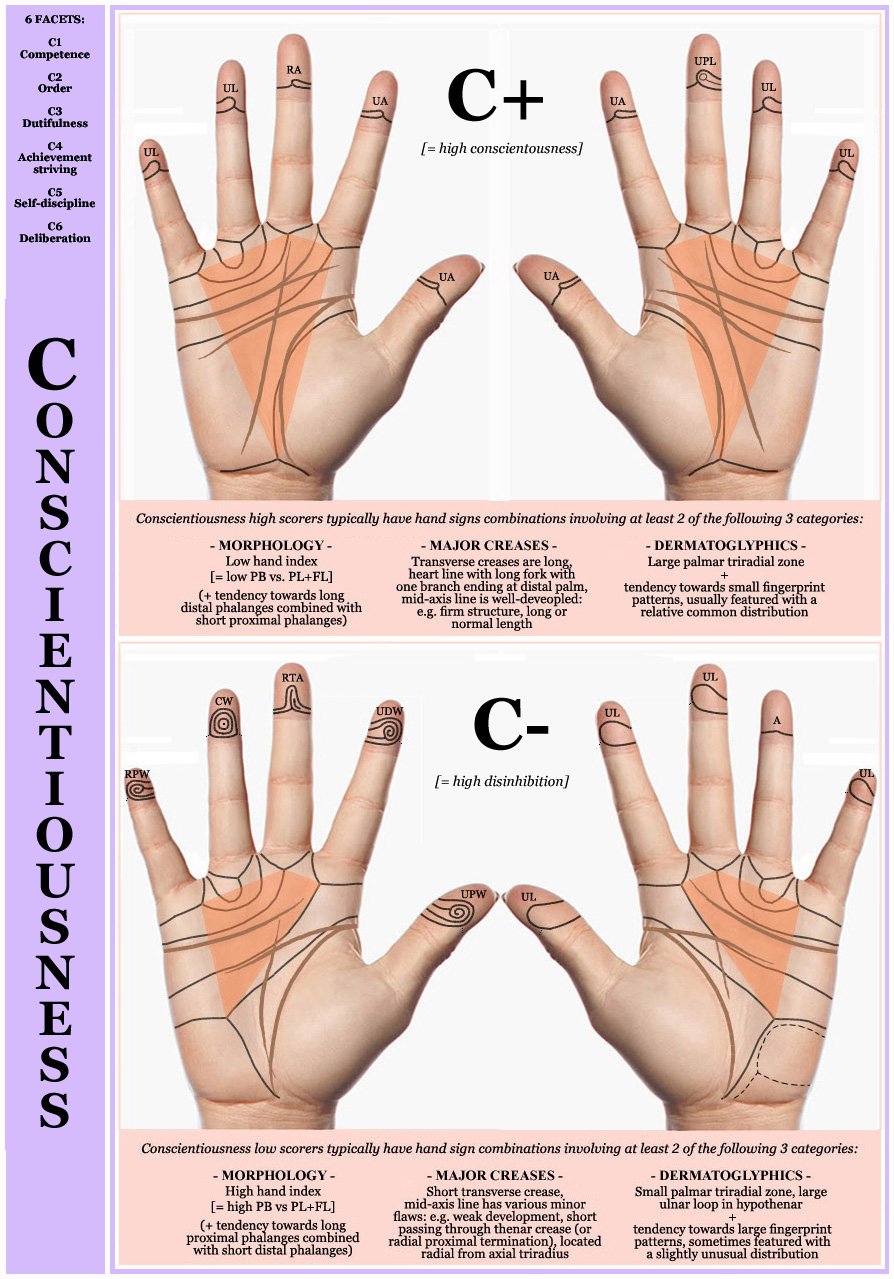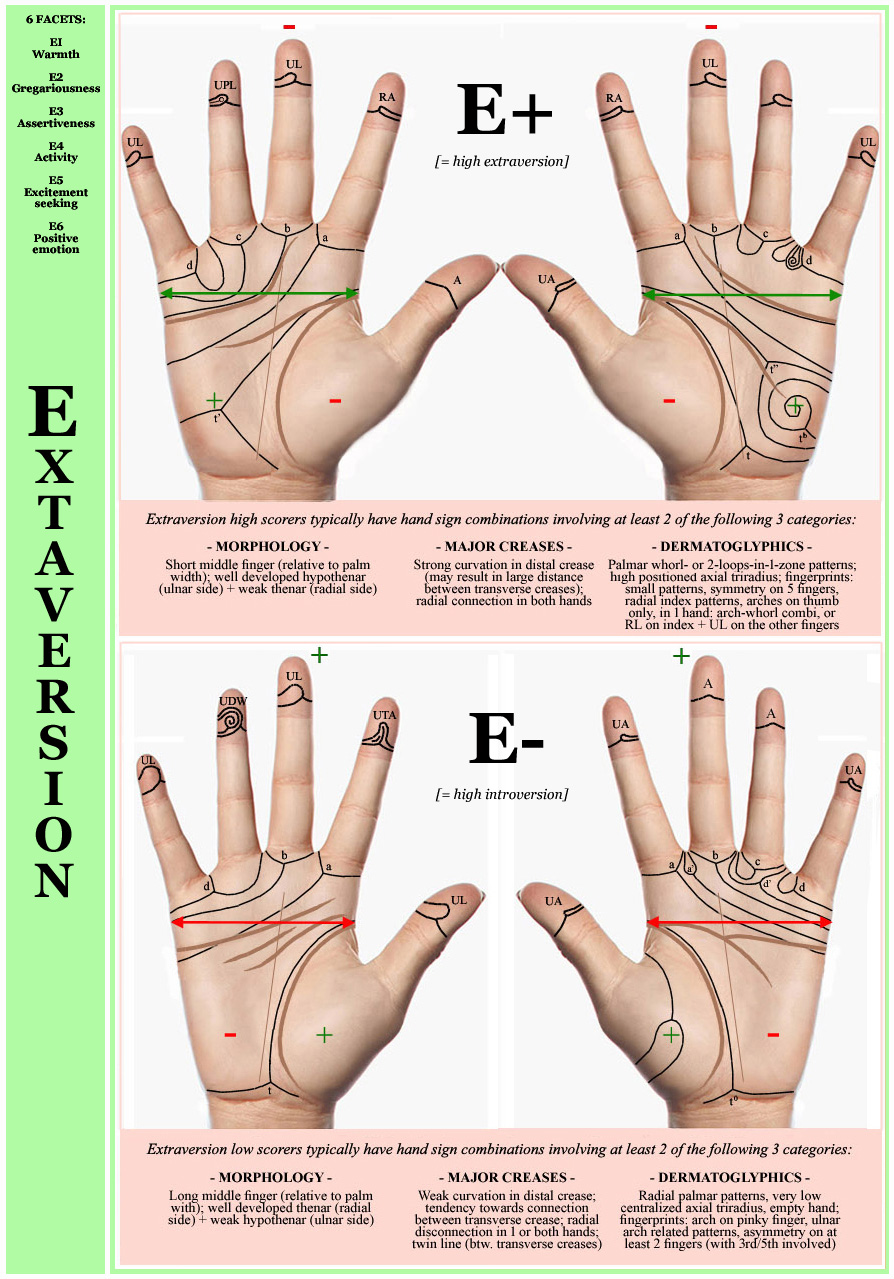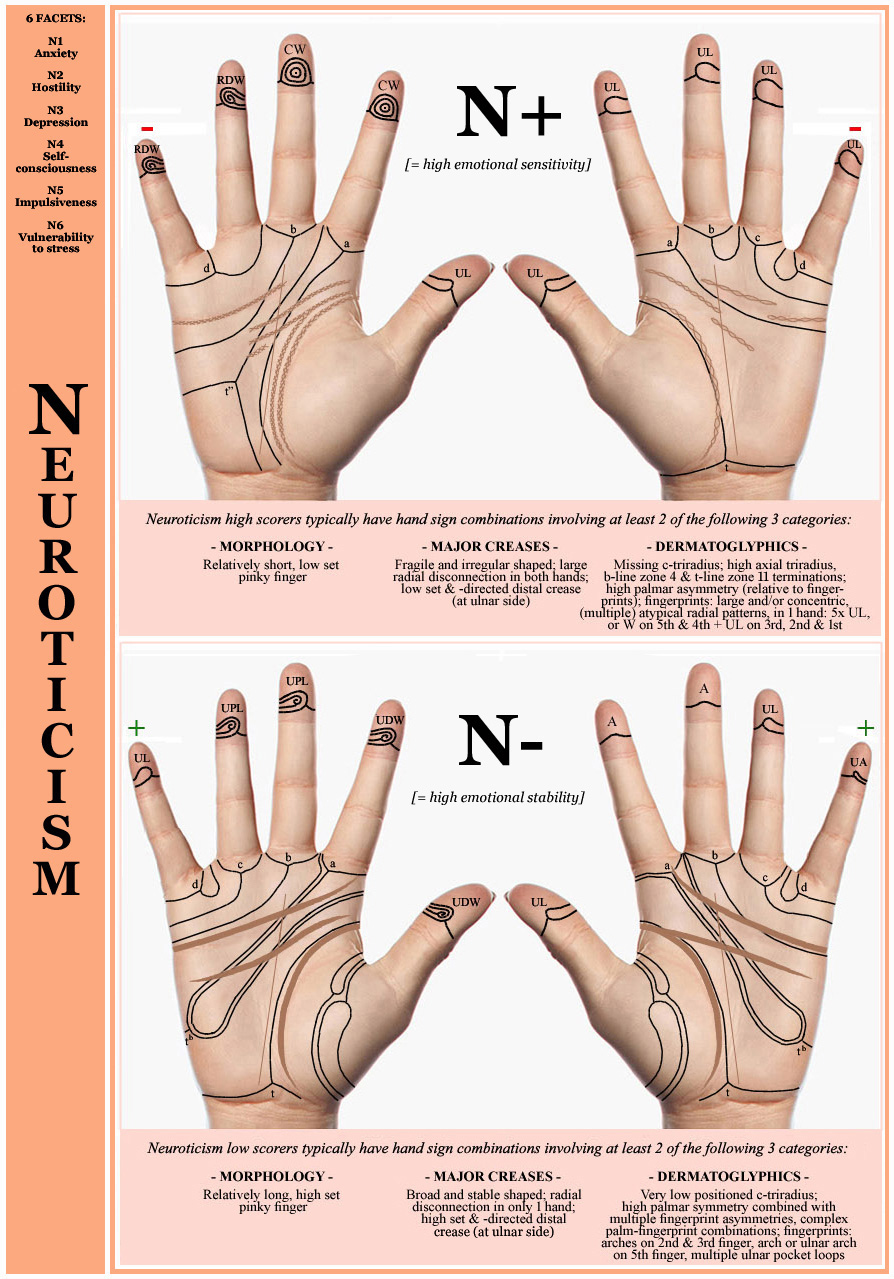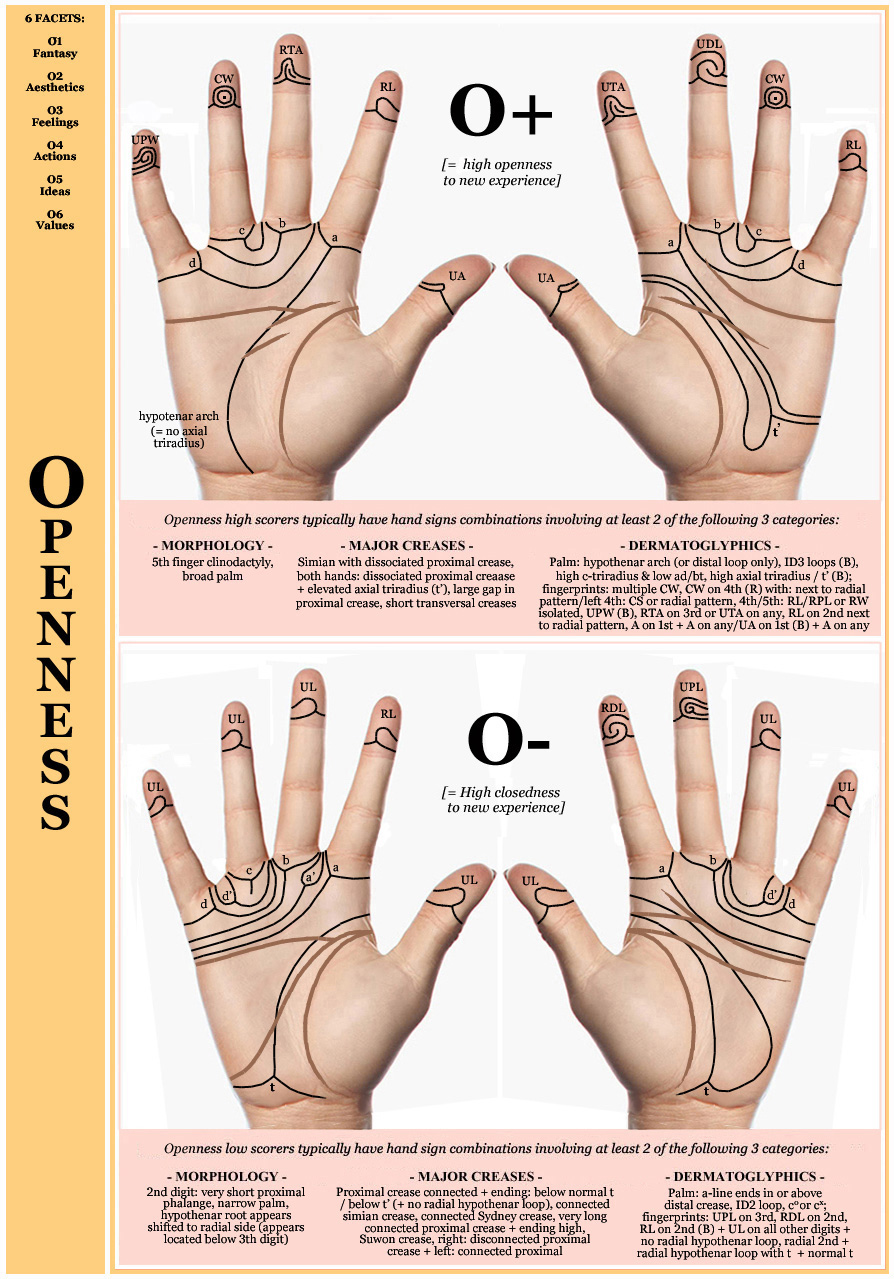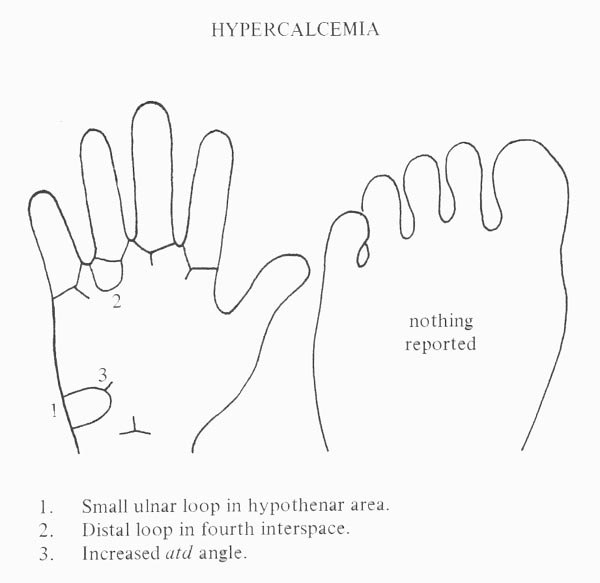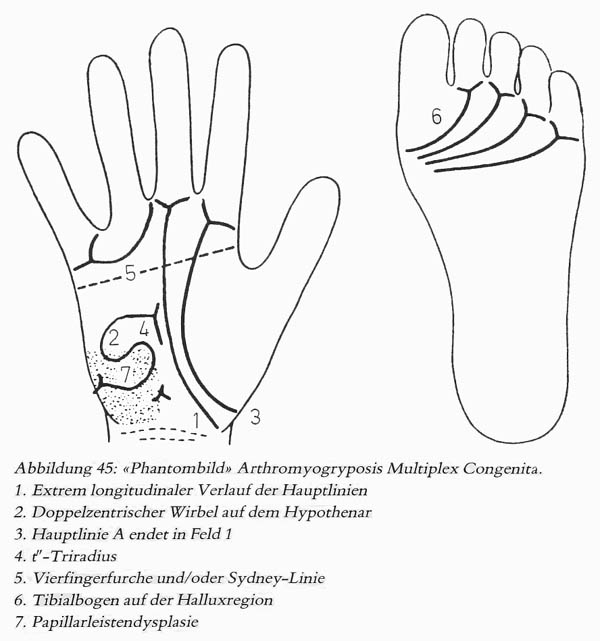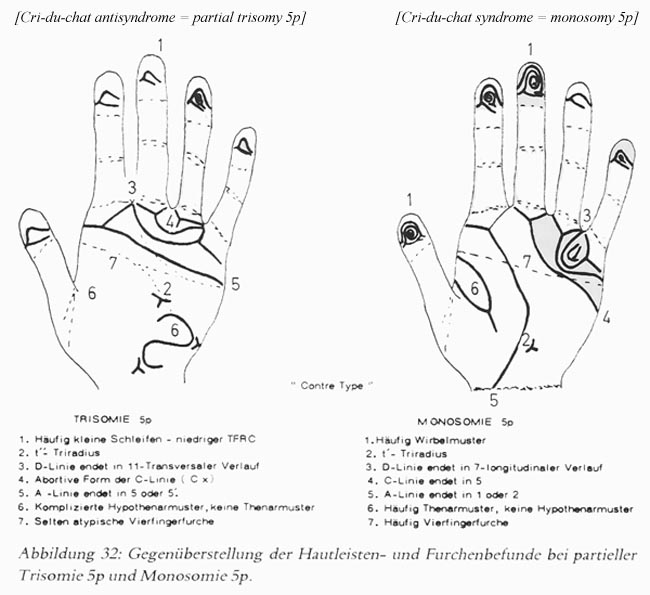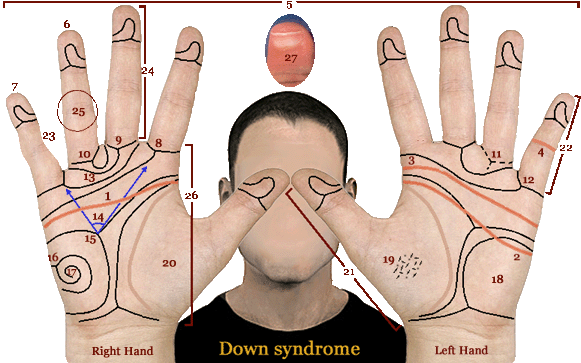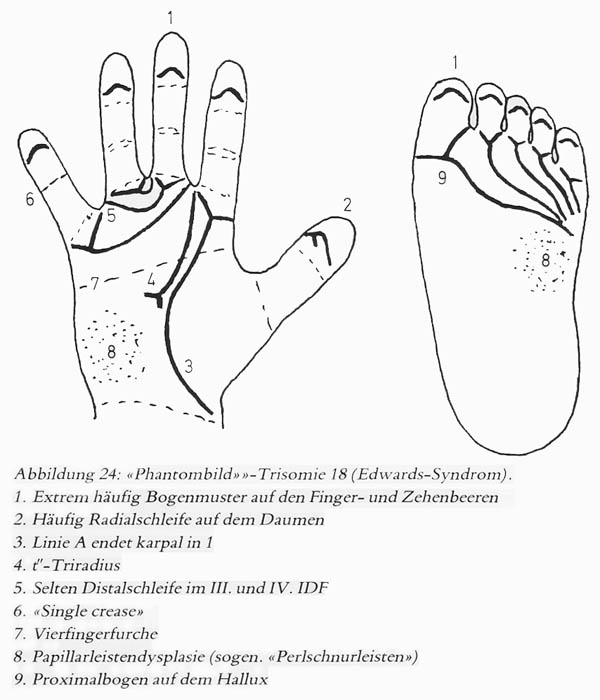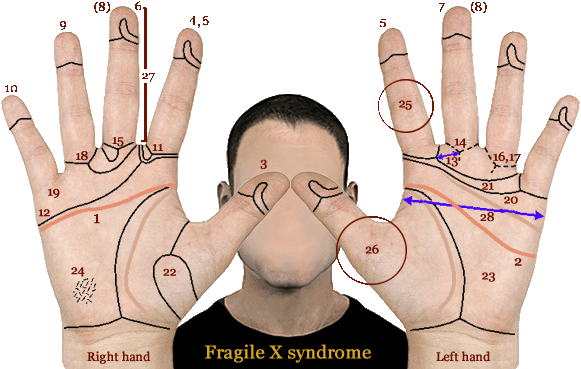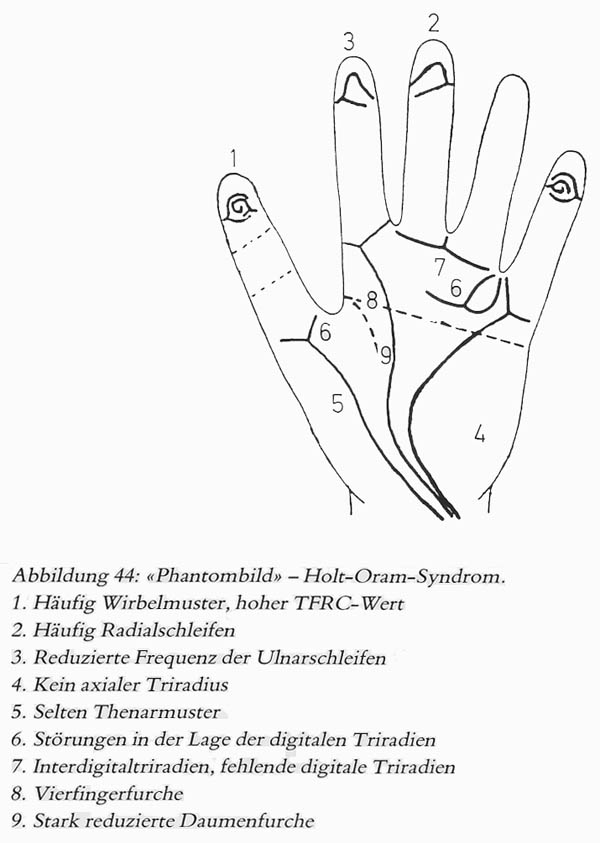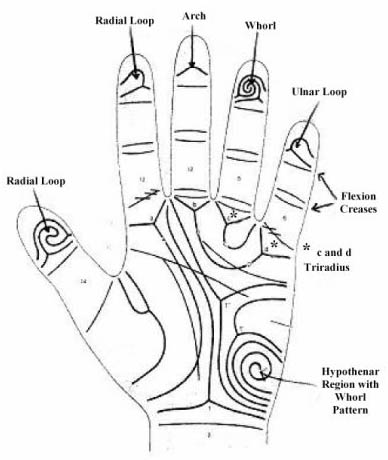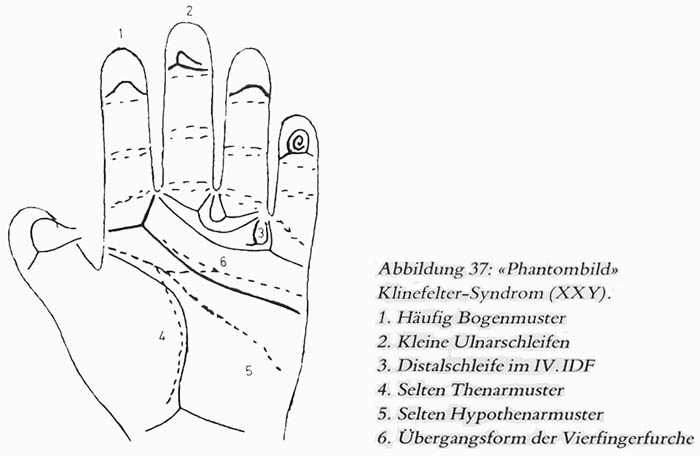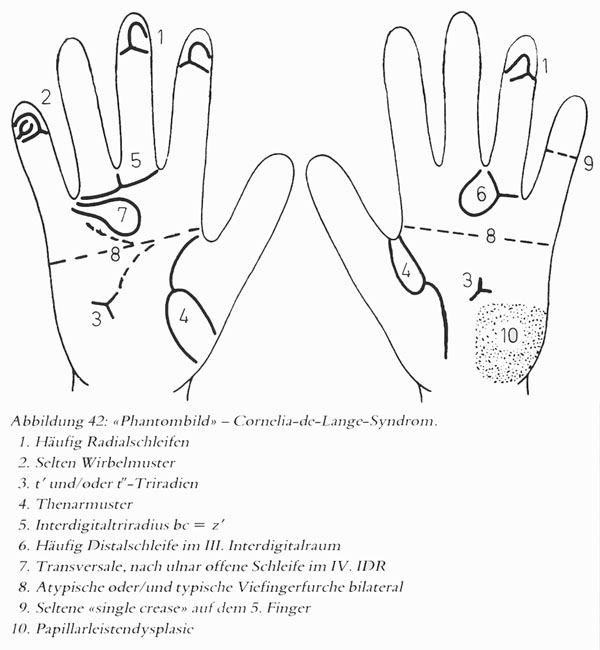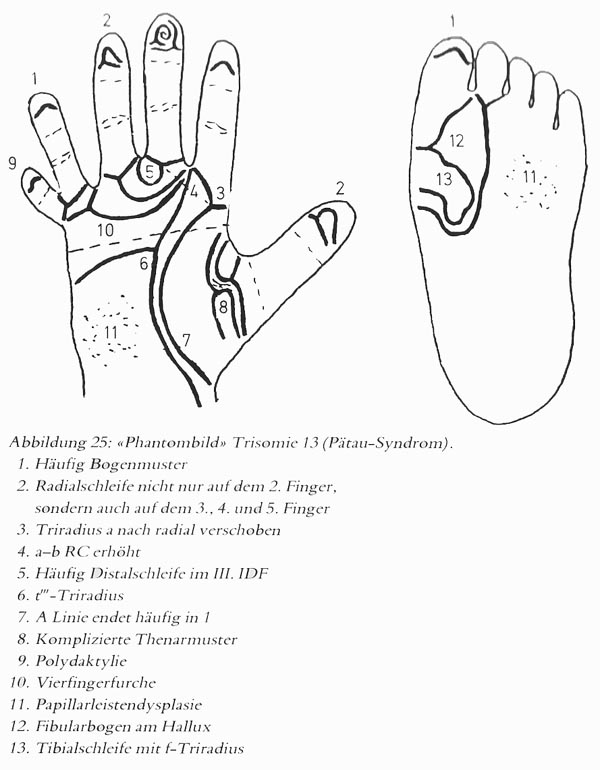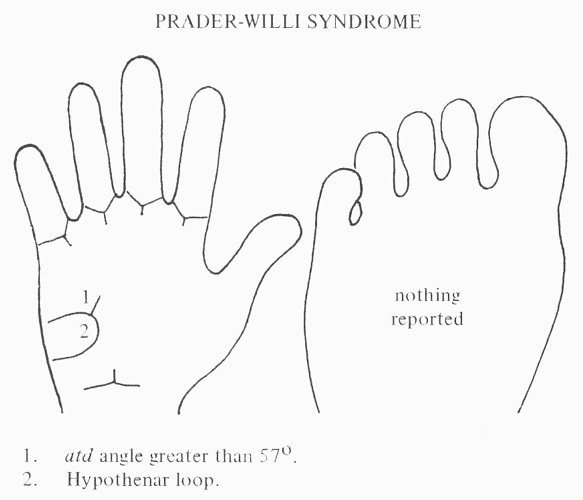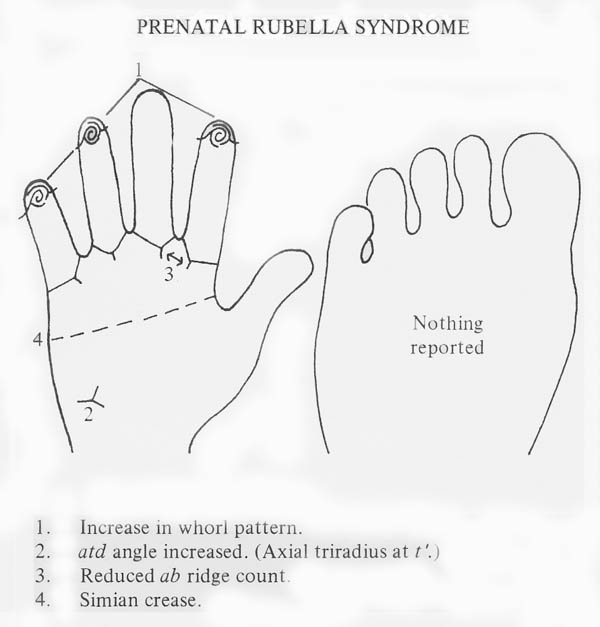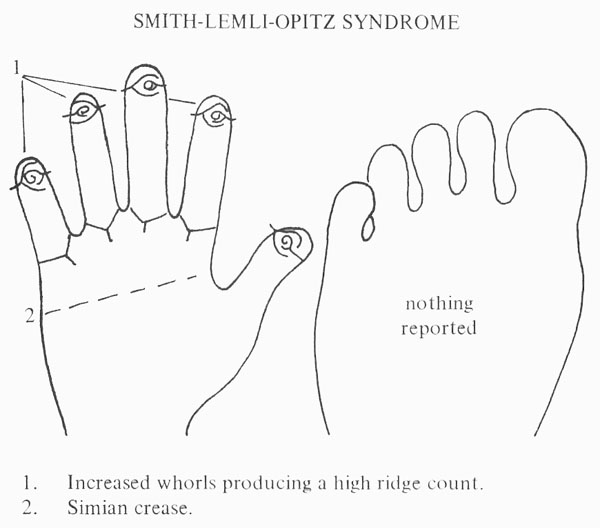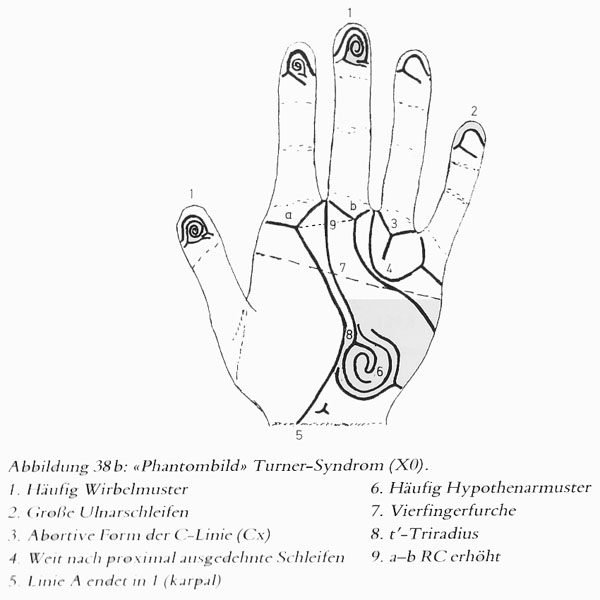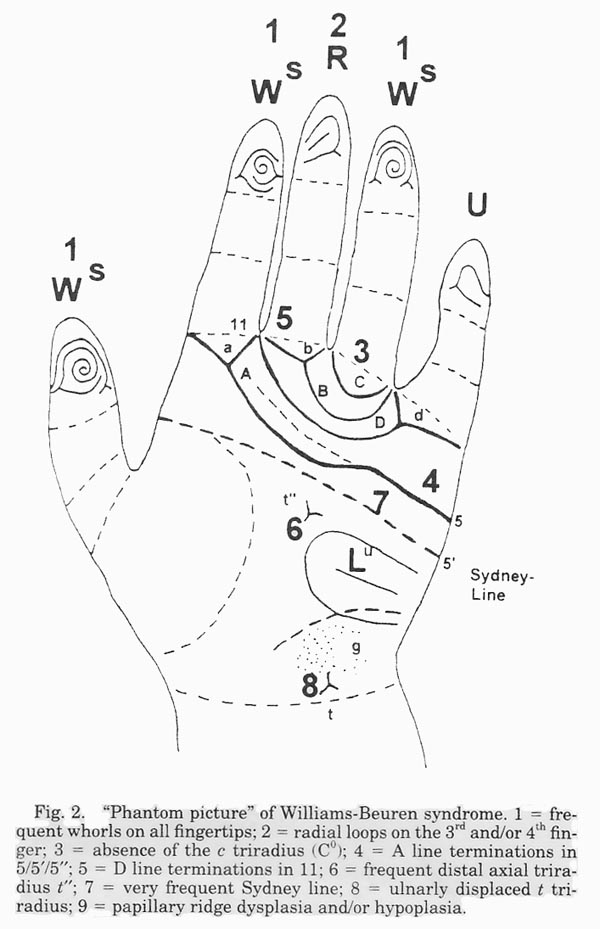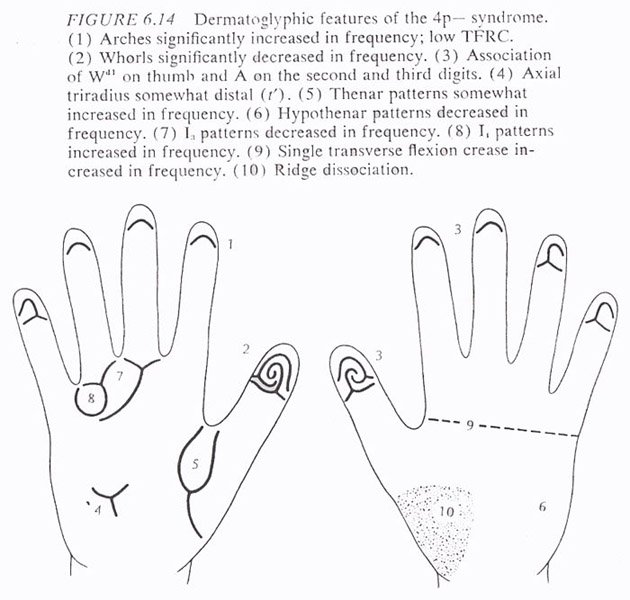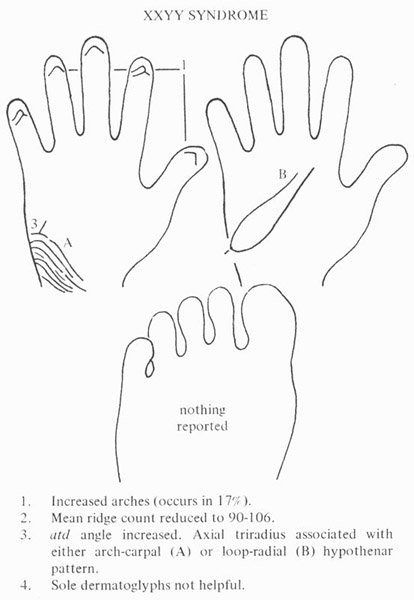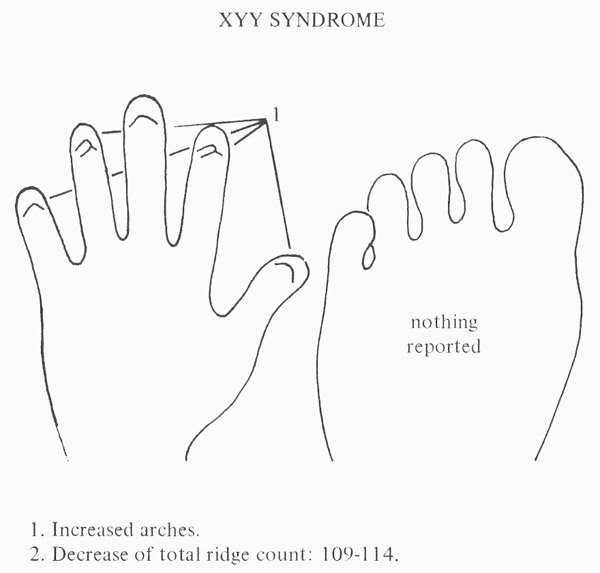
Scientific Hand Charts Collection:
de Grouchy syndromes: 18p- & 18q-
3 Hand Charts for 18 deletion syndromes!
18p- syndrome - a.k.a. de Grouchy syndrome 1 - is a genetic condition caused by a deletion of the short arm (the p arm) of chromosome 18; typical features include: mental retardation, short stature & small hands. 18p- occurs in about 1 of every 40,000 live births.
18q- syndrome - a.k.a. de Grouchy syndrome 2 - is a genetic condition caused by a deletion of the short arm (the p arm) of chromosome 18; typical features include: mental retardation, short stature & short thumbs. 18q- occurs in about 1 of every 40,000 live births.
Ring 18 syndrome (18r)- is an extremely rare genetic is a rare disorder in which there is deletion of chromosomal material from both ends of the 18th chromosome and joining of the ends to form a ring; typical features include: mental retardation, short stature & tapering fingers. Since 1960 ring 18 syndrome has been described for only about 60 case reports.
Prevalence: all three 18 deletion syndrome variants together is close to 1 in 20,000 live births.
Hand charts are available for each of the three variants of the 18 deletion syndrome, which describe the significance of various typical features inside especially the dermatoglyphics thatmanifest often combined with the presence of a simian line (= single transverse flexion crease) - see pictures below.
NOTICE: Individual hand features described below should not get associated in isolation with any theme; only combinations involving multiple hand levels have potential for diagnostic purposes.
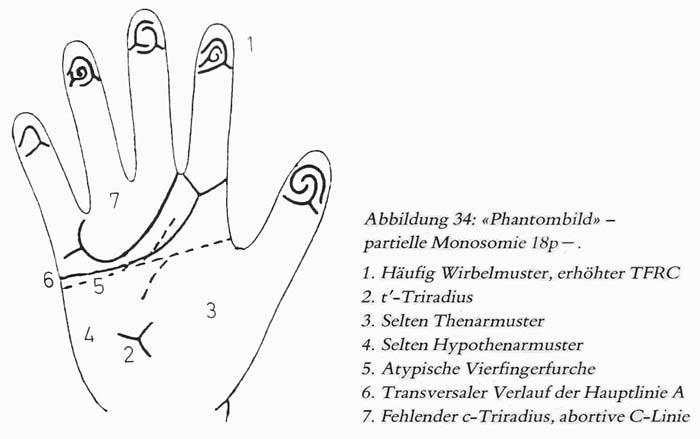
Hautleistenfibel (1981), p.85;
authors: R. Rodewald & H. Zankl
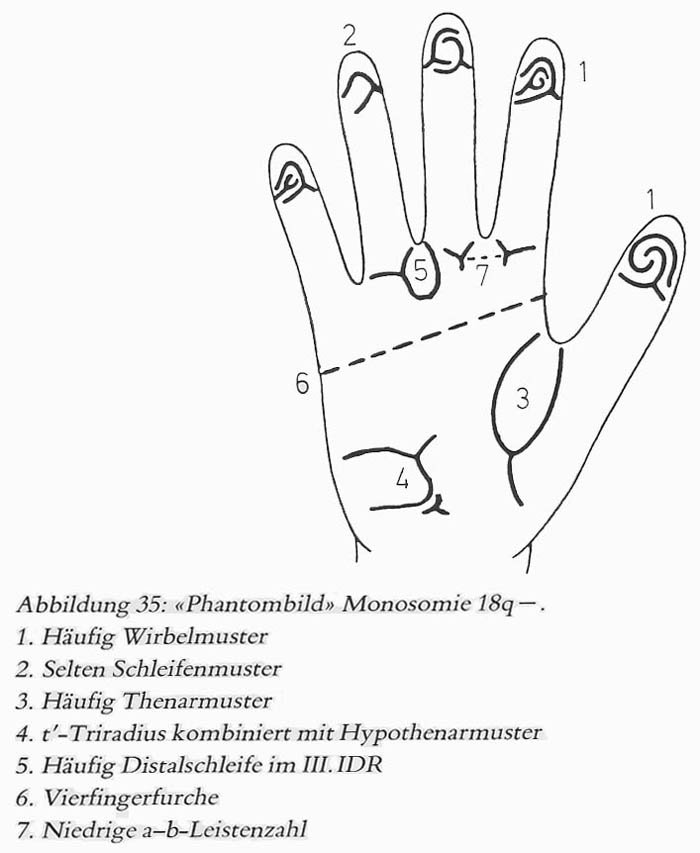
Hautleistenfibel (1981), p.87;
authors: A. Rodewald & H. Zankl
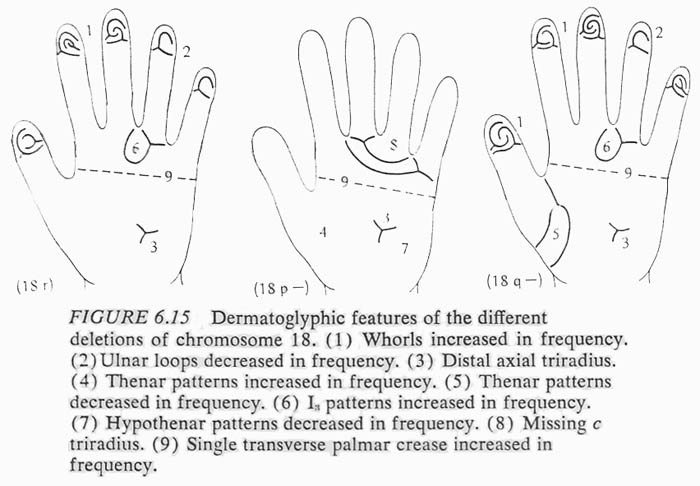
Dermatoglyphics in Medical Disorders (1976), p.192;
authors: B. Schaumann & M. Alter
Other significant hand signs (not reported inside the hand charts):
In some individuals with 18p- relatively small hands may be present (source: NORD).
Chromosome 18q- syndrome is also often associated with distinctive abnormalities of the hands, including long, thin, tapered hands and/or abnormal placement of the thumbs (source: NORD).
All significant hand signs listed above for 18 deletion syndromes together cover four out of the nine perspectives of the hand as defined according Multi-Perspective Hand Reading (including hand level 3, 5, 8 & 9).
A summary of the most significant hand sign combinations in de Grouchy syndrome 1 & 2 is described here:
Decoding the language of the hand:
hand sign combinations in de Grouchy syndrome 1 & 2!
Hand charts are available for many other diagnostic issues;
start browsing HERE
![]() SCIENTIFIC HAND CHARTS: Introduction
SCIENTIFIC HAND CHARTS: Introduction
Hand charts for Big Five personality dimensions:
• Hand chart(s) for Agreeableness (2x: 1 in 4 people)
• Hand chart(s) for Conscientiousness (2x: 1 in 4 people)
• Hand chart(s) for Extraversion (2x: 1 in 4 people)
• Hand chart(s) Neuroticism (2x: 1 in 4 people)
• Hand chart(s) Openness (2x: 1 in 4 people)
Hand charts for diseases:
• Hand charts for hypercalcemia (1 in 4,000 people)
Hand charts for syndromes:
• Hand charts for arthrogryposis (1 in 10,000 people)
• Hand charts for cri-du-chat syndrome (1 in 30,000 people)
• Hand charts for Down syndrome (1 in 700 live births)
• Hand charts for Edwards syndrome (1 in 6,000 live births)
• Hand charts for fetal alcolhol syndrome (1 in 500 people)
• Hand charts for fragile-X syndrome (1 in 5,000 people)
• Hand charts for Holt-Oram syndrome (1 in 100,000 live b.)
• Hand charts for Kabuki syndrome (1 in 32,000 people)
• Hand charts for Klinefelter syndrome (1 in 1000 males)
• Hand charts for de Lange syndrome (1 in 15,000 live births)
• Hand charts for Marfan syndrome (1 in 5,000 people)
• Hand charts for Patau syndrome (1 in 15,000 live births)
• Hand charts for Prader-Willi syndrome (1 in 15,000 births)
• Hand charts for Rubella syndrome (1 in 100,000 people)
• Hand charts for Rubinstein syndrome (1 in 200,000 births)
• Hand charts for SLOS (1 in 40,000 births)
• Hand charts for Turner syndrome (1 in 2,000 female births)
• Hand charts for Warkany syndrome (1 in 200,000 births)
• Hand charts for Williams syndrome (1 in 14,000 births)
• Hand charts for Wolf-Hirschhorn syndrome (1 in 50,000 b.)
• Hand charts for XXYY syndrome (1 in 30,000 male births)
• Hand charts for XYY syndrome (1 in 1,000 male births)
• Hand charts for 18 deletion syndromes (2 in 40,000 live b.)
NOTICE: Reflexology hand charts are not included in this section because the scientific foundation of any of such charts is actually unknown; nevertheless, you can read more about the fundamentals of such charts HERE.
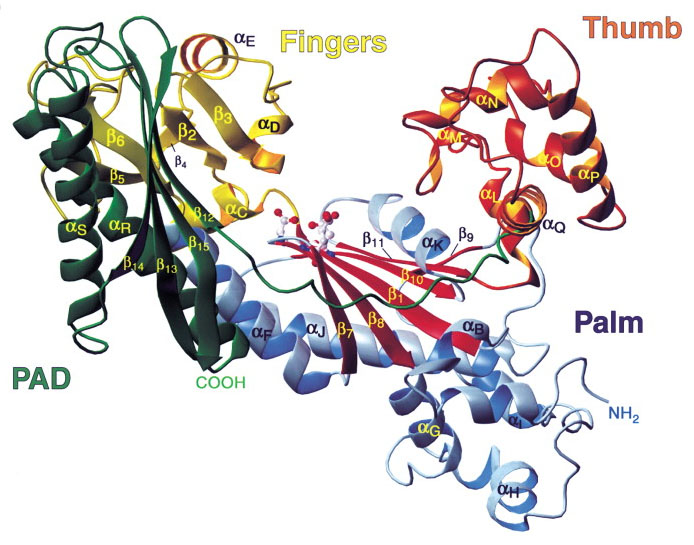
Other charts & maps:
• Fingerprints world map
• Hand reading experts world map
• Hand reflexology charts
